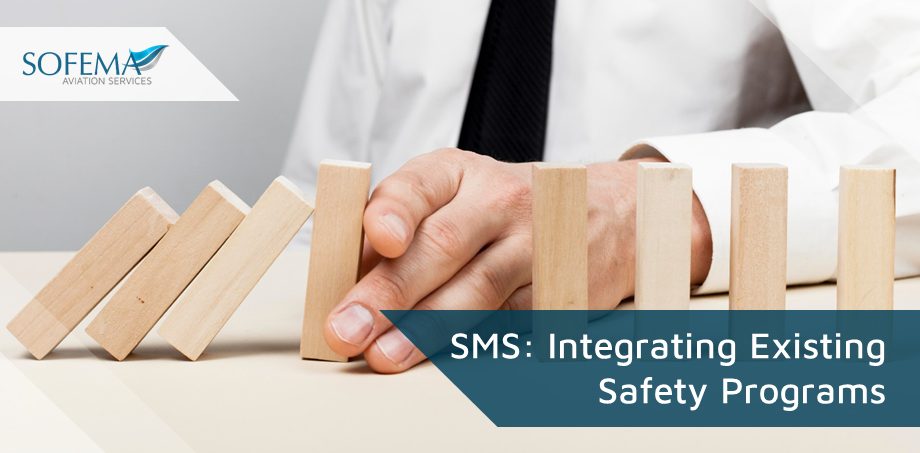Sofema Aviation Services (SAS) www.sassofia.com considers the challenges of Safety Management System (SMS) integration into an existing organisational system
Introduction – What makes a successful Aviation Safety Management System operation?
Effective aviation safety management relies on Five Key Concepts:
- Upper-level management engagement
- A just culture
- Safety event (Hazard with an unacceptable level of risk) Reporting and feedback,
- Training and education, and
- Safety Management System Program Ownership.
Concerning Proactive Safety Management System Integration into your Organisation
It is not intended that the SMS will replace the existing business processes & systems but rather build onto what is already in place (typically reactive business systems)
Leadership Team Engagement
Senior Management must both support and fully engage/interact with the SMS program.
- The commitment of the top management is pivotal as it plays a critical role in implementing safety management systems.
- The senior management is responsible for
o Defining a company’s safety policy,
o Making adequate resources and tools available for the staff to ensure that the safety policy can be realized, and setting realistic and achievable targets for required safety performance.
- The entire organization must see management not just giving the appearance of promoting the SMS program but also actually being involved with it.
- The leadership team should continually demonstrate commitment through a positive attitude towards safety as well as actively promoting safety.
- The management should always lead by example as well as communicate openly with the staff concerning any safety-related issues.
Note: When we consider the multiple demands placed upon the leadership team, this critical requirement (SMS engagement) is an extreme challenge for an organization.
- A non-punitive just culture towards affected personnel is also crucial. (A single instance of punishment inappropriately applied can destroy the entire initiative).
- The organization must precisely define the limits of what is acceptable behaviour, for example, to include typical human factors-related events (slips, errors, mistakes) as opposed to willful deviations from policies and procedures (violations, “workarounds”, intentional disregard of Standard Operating Procedures – SOPs).
- Safety event reporting is a key foundation of SMS. If safety personnel are not informed of event occurrences, there can be no investigations.
- Training on SMS program basics, implementation, and continued operation is essential.
- All personnel, from senior management to newstarters, must receive role-relevant SMS training.
Note: It is not intended that the organization’s accountable manager does not need to become an instant expert in SMS, however, should have both basic knowledge as well as a willingness to support.
- Frontline staff on the other hand should additionally receive operationally specific training.
Cautionary Notes
- Implementing safety management systems based on a generic safety management regime may lead to employees feeling disconnected and their contribution not taken into account.
- It is therefore important to ensure the use of generic safety management principles and international standards does not displace or sideline existing local and system-specific safety knowledge.
Final Comment: SMS should drive a unified and systematic approach which supports both a common approach as well as the ability to provide education to new employees.
Next Steps
Follow this link to our Library to find & Download related documents for Free.
Sofema Aviation Services www.sassofia.com & Sofema Online www.sofemaonline.com offer Safety Management System Training as Classroom, Webinar or Online Courses. Please see the websites or email team@sassofia.com
Tags:
aviation, SMS training, Aviation Safety Management System, Aviation Leadership, Just Culture, Senior Management, SAS blogs, Aviation Organisational System, Human Factors (HF)




